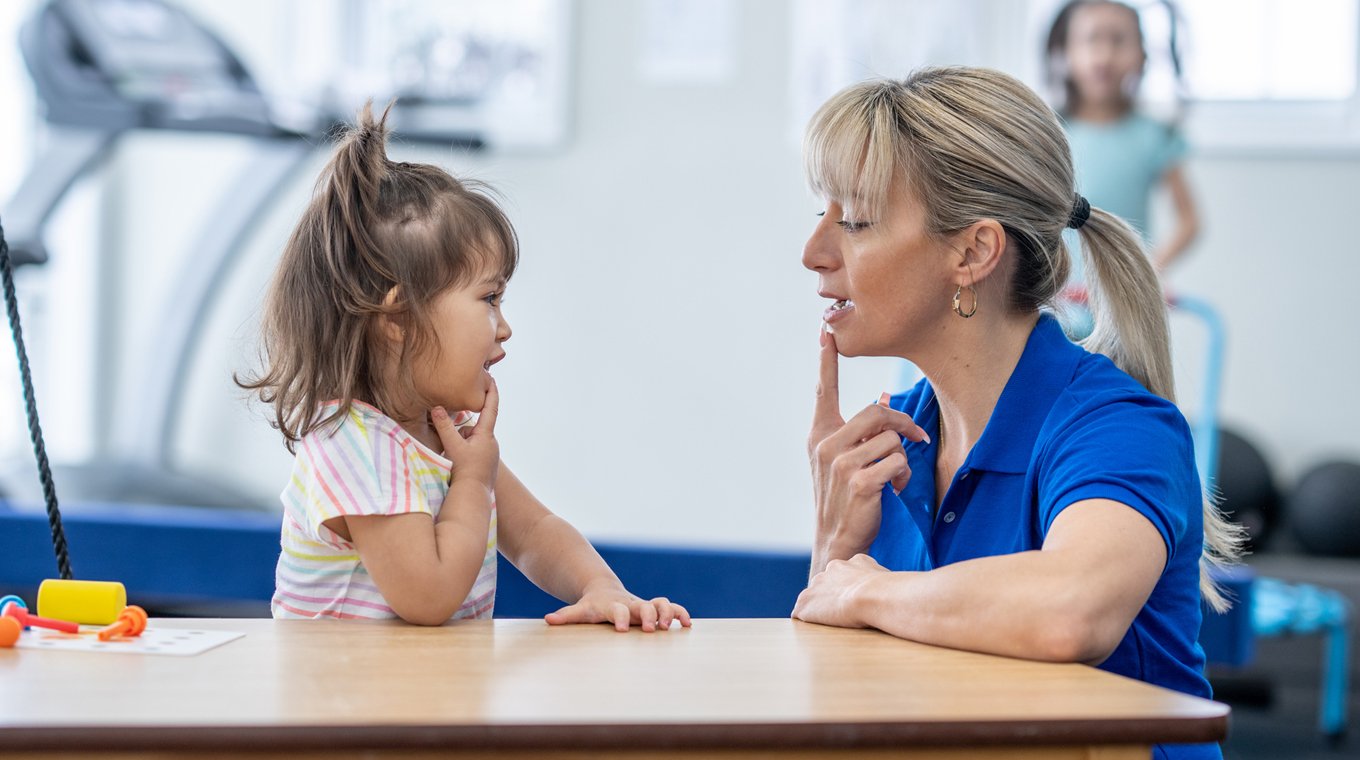
In this article
As parents, we’re often very conscious of our baby’s milestones and development</a>; marking down their first smile, when they finally slept through the night, and that first wobbly-leg attempt at standing. But what if that little one you’ve nurtured, cuddled, and read to over the months has yet to utter their first words? What if instead, they opt for nonverbal communication techniques to let you know their needs?
What is nonverbal communication exactly? Well, if your child has been communicating to you with hand gestures, pointing, body language, eye contact, and other cues that are not actual words, they are communicating nonverbally.
If this is the case, and your child isn’t speaking as much as you think they should, or at all, read on for a speech and language milestone checklist and tips on how to know when to reach out to your child’s doctor for guidance.
Ways to improve child communication

If your nonverbal child is just starting to communicate, you should encourage any communication attempts that they make. For example, if you recognize that your child is communicating through gestures, like pointing or making sounds, affirm and validate them; let them know that you understand what they’re trying to tell you.
Repeat back what they’re saying or model the words, phrases, and gestures you’d like them to use. Using pictures is another great way to help your nonverbal child communicate. Practice with your child on a regular basis. It’s easy to become complacent and give them what they want rather than working with them to help them verbalize their needs. Repetition and positive reinforcement are important.
Caitlin Nogle is a speech-language pathologist (SLP) at an elementary school in Montana. In addition to helping children who struggle with articulation — like properly pronouncing certain letter sounds — she also helps nonverbal students learn to communicate with their teachers and peers. Noble uses games and toys to aid the process.
“So I may have a game that is targeted — it’s just a random fun game — but I can also target articulation and then I can target describing with my next group of kids,” Nogle told KPAX8 News. “I can use it as a reinforcer for kids that are using their iPads correctly to communicate. So one toy can go a long way for a lot of different kids’ needs.”
There are also things you can do at home for your nonverbal child. Many SLPs make their resources available to the general public through sites like Teachers Pay Teachers. This sentence-building speech therapy activity bundle for non-verbal students is one example. And, if you’re a homeschooling parent, your child may qualify for community educational services.
How to identify child communication issues

Typically, children begin saying their first words around their first birthday. If they haven’t reached this milestone, they could be experiencing a language delay. Language delays can include difficulty understanding or responding to words and sentences, or challenges speaking.
“I try to educate on what’s typical,” Timberly Leite, a certified speech-language pathologist, told The New York Times. “If you know what’s typical, how many words they should have, how long their sentences should be, what they should be doing by certain developmental milestones, you can use that as a comparison and a checklist. And if it’s not happening, that can be a sign to seek help.”
According to The National Institute on Deafness and Other Communication Disorders, the following is a partial list of age-appropriate speech and language milestones for infants and young children.
- Birth to one year: Cooing, making noise when spoken to
- Six to 11 months: Understands no, repeats or mimics sounds, may say their first word
- One year to 17 months: Attempts to imitate words, answers questions nonverbally
- 18 months to 2 years: Has a vocabulary of 50 words, combines words, and uses phrases
Nonverbal child? When you should be concerned

All children develop at different rates and reach milestones at various times, so when your child is nonverbal, it can be tough to know when it’s time to seek professional help. If your child is not talking and hasn’t developed appropriate language skills for their age, use the following guidelines to help you gauge whether or not it might be time to take action.
- Child language development is progressing but then suddenly stops
- Language development doesn’t change or improve after several weeks
- The child’s language development regresses
- The child tries to communicate but becomes frustrated that they’re unable to get their point across
While most people associate a nonverbal child with the autism spectrum, there are a number of causes. These include apraxia of speech, speech and language disorders, and selective mutism, which can be anxiety related.
For Emily Barton, finding the right resources for her nonverbal daughter took time. Her daughter Jaxlee, who has cerebral palsy, saw little improvement with therapy. “The more time that went on, the more I grieved her inability to be verbal,” Barton wrote on her blog. “She couldn’t tell me simple things like she was thirsty, needed a hug, or wanted to play dress up. I became an expert at her body language and the little sign language she could coordinate to tell me something.”
At the age of 2.5, Jaxlee was evaluated for Augmented and Alternative Communication (AAC) which in her case allows her to communicate with a tablet, and she’s been using it and improving ever since. “She is in a general ed Kindergarten class where she fully participates in her class through her AAC. She can communicate things that we had no idea she knew,” Barton wrote.
If you suspect that your child may have a language delay, connect with your child’s pediatrician. They can refer your child to a licensed speech therapist if further evaluation is necessary.




